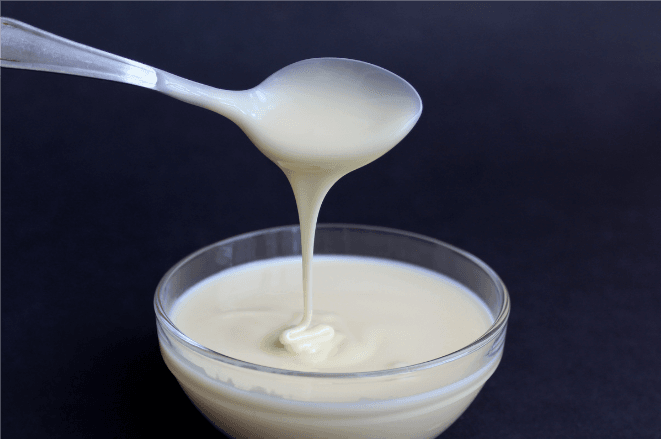Xanthan Gum Buying Guide-FAQs about buying Xanthan Gum
Do you care deeply about nutrition and wellness? Are you a gluten-free wizard in the kitchen? Or maybe an adventurous home chef looking to level up your ingredient arsenal? Then this handy xanthan gum breakdown is for you!
In this beginner’s guide, we’ll tackle everything about xanthan gum- what it is, how it’s produced, and why it’s become such a crucial element in modern cooking and manufacturing. You’ll get clarity on when and how to use xanthan gum to make your dishes shine. And importantly – is it safe? We’ll address concerns about health, gluten content, and whether xanthan fits specialized diets.

What is Xanthan Gum?
Xanthan gum, given the code E415, is a substance used to adjust the texture and thickness in foods. It’s made of glucose, mannose, and glucuronic acid units. The gum comes from a bacteria called Xanthomonas campestris originally found living on cabbage plants. To make xanthan gum commercially, the bacteria ferment sugars like glucose or sucrose. As a byproduct, they secrete the gum, which then gets pasteurized and dried. When xanthan gum mixes with liquids, it dramatically thickens them. This ability to control texture makes it a useful addition to foods, drinks, cosmetics and pharmaceuticals. Since the FDA recognizes xanthan gum as Generally Recognized as Safe (GRAS), it has become an important industrial biopolymer made through microbial synthesis.
Is xanthan gum safe?
Major health agencies say xanthan gum is safe to eat. The FDA categorizes it as GRAS with no limits on daily intake. Groups like JECFA and EFSA also approve using it in foods, based on lots of toxicity tests and human studies showing no links to cancer, genetics issues, development problems, or reproduction issues. While some people may get indigestion, most tolerate it well and their gut bacteria can ferment it. People with wheat/gluten allergies should be careful though, since xanthan gum often uses wheat or corn glucose. At the low approved levels, xanthan gum poses very few health risks. Its long history of safe use in foods, drinks, pharmaceuticals and cosmetics supports its safety as an additive.
Is xanthan gum gluten-free?
Xanthan gum is generally gluten-free, but there are key things to consider. Gluten is a protein found in wheat, rye, and barley that causes issues for people with celiac disease or gluten sensitivity. For additives like xanthan gum to be gluten-free, they can’t be made from or come into contact with these grains during manufacturing.
Xanthan gum itself has no gluten protein or amino acid sequences, since it comes from sugar fermentation, typically using corn glucose syrup or non-grain sugars like sucrose or lactose. When xanthan gum starts from non-gluten sources and facilities avoid cross-contamination, it can reliably be gluten-free. But it’s essential to ensure no gluten ingredients are used in the production process.
Xanthan gum side effects
Most people tolerate xanthan gum well, but large amounts may cause GI issues for some. As a soluble fiber we can’t fully digest, xanthan gum passes intact through the stomach and small intestine. Gut bacteria ferment it in the large intestine, releasing gases like hydrogen, methane, and carbon dioxide. This can lead to bloating, flatulence, stomach discomfort, loose stools, or diarrhea in sensitive people when too much is consumed.
Those with irritable bowel syndrome seem most prone to problems from high xanthan gum intake. And people allergic to corn could potentially react since it’s typically made from corn sugar. However, at the low approved food additive levels, most healthy folks are unlikely to have issues. While personal tolerance varies, xanthan gum poses very few risks when used appropriately at FDA-regulated levels.
Is xanthan gum vegan?
Good news for vegans – xanthan gum is completely animal-free. This popular food additive is made by fermenting sugars using a type of bacteria called Xanthomonas campestris. No animal ingredients are used at all in the production process. Xanthan gum is commonly used to thicken or stabilize vegan foods like dressings, sauces, non-dairy products, baked goods, and more. Since it comes from a natural, non-animal source, xanthan gum aligns perfectly with vegan diets and principles. It plays a key role in creating satisfying and appealing texture and consistency in a wide variety of plant-based foods.

Is xanthan gum safe for dogs?
Xanthan gum is generally considered safe for dogs if they consume trace amounts found in some pet foods or treats. Most wet and dry dog foods contain less than 0.3% xanthan gum as a moisture regulator or gravy thickener. Healthy dogs eating normal serving sizes likely won’t have any issues. Even large breeds would only get a few grams total from commercial kibbles with xanthan gum. However, manually adding extra xanthan when homemade cooking or mixing dry food with water can potentially lead to loose stools or diarrhea. Dogs prone to digestive conditions like IBD may also react poorly. While not necessarily toxic, too much xanthan can temporarily disrupt digestion. So it’s sensible to monitor stool consistency and reduce xanthan gum if any diarrhea crops up.
Does xanthan gum expire?
Xanthan gum lasts a long time and doesn’t expire quickly if stored properly. As a dried powder, it’s very stable and resists breaking down when kept dry, with an expiration date of 2 years from production. But even beyond that, xanthan will stay safe and work well if kept moisture-free. The main things that reduce quality over time are exposure to moisture, high heat, or enzymes that can slowly damage the long xanthan polymer chains. Storing it airtight in a climate-controlled environment prevents these. Old xanthan may thicken slower but still works, with an expected 4-5 year shelf life when precautions are taken.
Xanthan gum in ice cream
Xanthan gum is often added to ice cream to act both as a stabilizer and an emulsifier. This gives ice cream its smooth, creamy texture and nice mouthfeel. Ice cream contains a delicate balance of tiny ice crystals, air bubbles, and fat droplets in unfrozen liquid. Xanthan helps form a stable emulsion between the water and fats like cream, milk, or butter. This prevents separation and large ice crystals from developing over time. The thickness of the xanthan also keeps air bubbles suspended evenly. This improves foam stability and adherence, avoiding issues like iciness, foaming, and emulsion breakdown during storage. The xanthan-gum maintains a velvety texture so ice cream scoops straight from the freezer. It plays a key role in stabilizing that iconic creamy mouthfeel and slowing deterioration during long storage.
Is xanthan gum used in oil drilling?
Xanthan gum is widely used as an additive in drilling fluids for oil and gas wells. It has some great properties that make it very helpful when drilling deep under the ground.
Even small amounts of xanthan can thicken up watery liquids used for drilling. This helps carry rock pieces back up the well shaft. The thicker fluid also controls pressure underground and keeps the well walls stable. A bonus – xanthan makes the drilling mud shear-thinning. This allows them to temporarily thin out when pumped, then thicken up again when resting.
Xanthan-gum stands up to tough conditions deep underground, like varying temperatures, pH, and salt levels. It resists breaking down under intense friction forces. And its chemistry prevents clay soils from swelling up. This combination of traits makes xanthan super functional for drilling operations.
The main perks are easy viscosity adjustments, drag reduction, keeping solids suspended, stopping fluid loss into rock cracks, and clay control. Using xanthan improves drilling efficiency and effectiveness when exploring deep underground.
Out of all options, xanthan gum is indispensable for its versatility and performance in harsh drilling environments. Its shear-thinning and stability truly optimize deep well processes!
We’ve covered a lot of ground looking at xanthan gum – what it is, how safe it is, and the many ways it’s used, from foods to beauty products and industrial processes. Now you’ve got a solid grasp of xanthan’s benefits and potential drawbacks. Armed with this intel, you can make informed choices when buying and working with this versatile ingredient.
When sourcing quality xanthan and other food additives, Mondstar checks all the boxes. With over 10 years under its belt supplying the food industry, this China-based company has earned a stellar reputation for reliable, top-shelf ingredients. If you want to take your recipes and creations to the next level, Mondstar has the xanthan and other additives to get you there. By choosing them as your go-to supplier, you can trust you’re getting the best products every time. [email protected]
